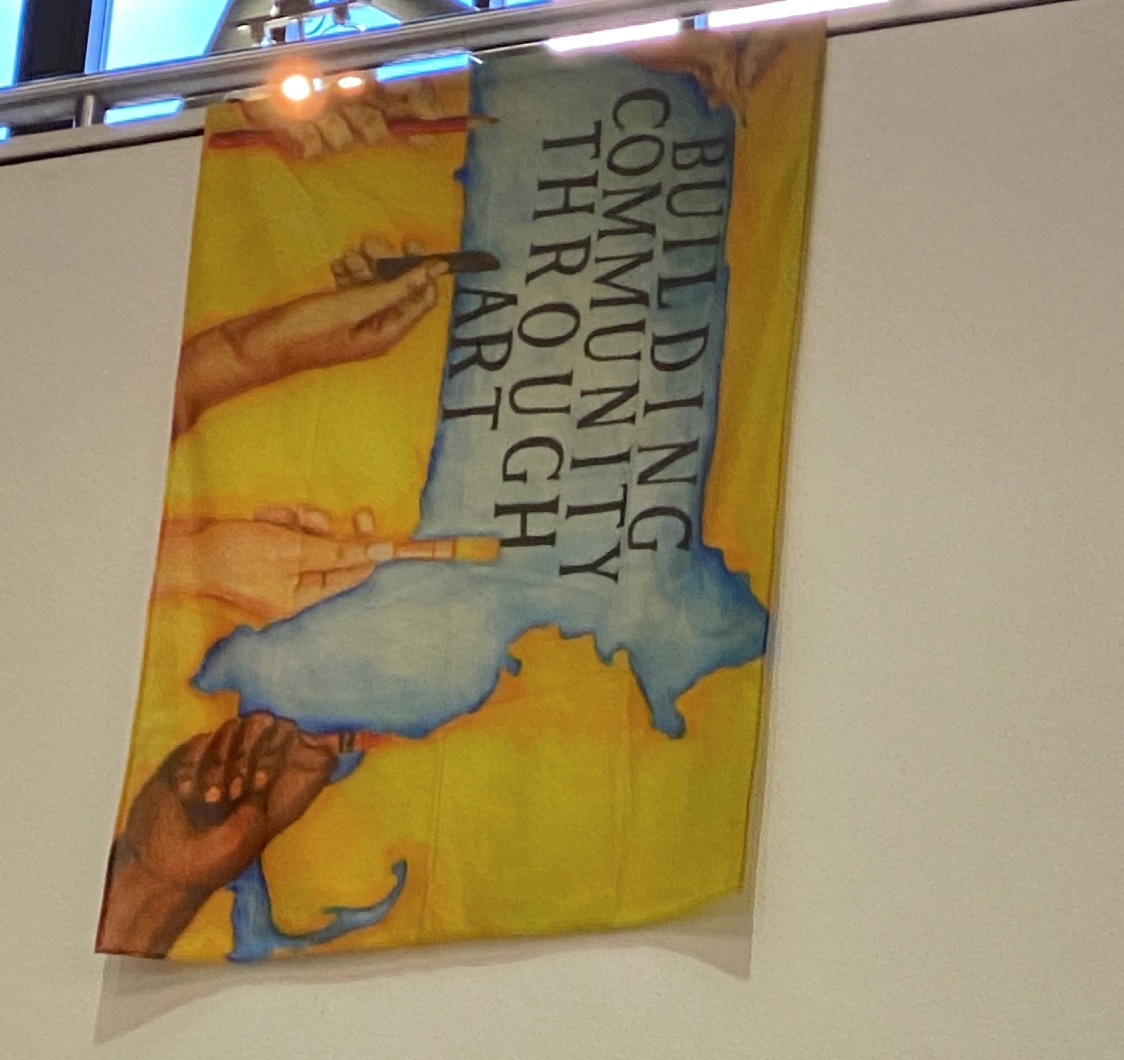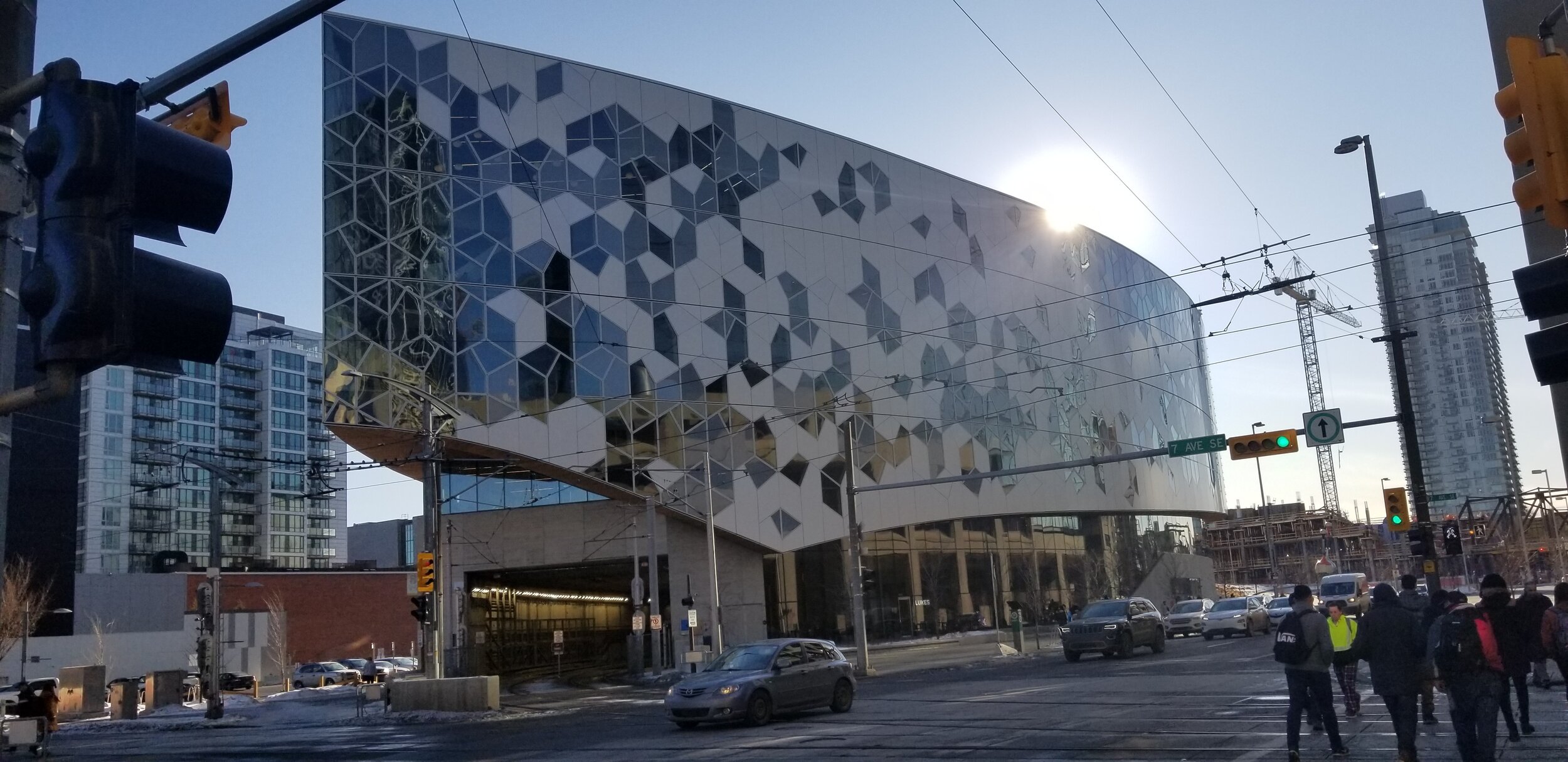The middle of January might strike most Calgarians as an odd time to take a long walk around downtown, and it would be hard to blame them. Temperatures might have plummeted to -40 degrees the week prior, but my classmates and I were excited to get outside and see our city in a new lens, especially in the current, relatively temperate weather conditions.
Last week, myself and three of my classmates took a walk around the Centre West area of downtown as a part of a Jane’s Walk. We hoped to search out examples of art in the area and were excited by the many examples of public art we were able to find.The picture above of the sculpture Buffalo Trails by JoAnne Schachtel is one example that, I believe, all of us were taken by. The herd of buffalo seemed to be marching across a field by the Alberta Court of Appeals and gave us pause to reflect on the history of the land we were standing on.
Walking through the downtown core and mindfully looking for art is something I have never thought of doing before. Usually, public art is something I may notice in passing as I rush to a meeting or to catch a bus. Within minutes, however, of starting our Jane’s Walk, excitement filled me as, within minutes, it began to feel like a scavenger hunt. It was a lot of fun to wander around a part of the city and to be able to discover artworks seemingly hidden in plain sight. To me, it seemed to give a new face to the city, one that I can explore and that has encouraged me to be more mindful as I move around my community. One of my group members noted the the new architecture and old buildings of downtown, as well as the art displays, has proven to her how picturesque Calgary is. Art appears to be ingrained in the infrastructure and architecture of the city. To another, the Jane’s Walk allowed her to enter an area of the city with little prior knowledge and to be mesmerized by the sights and examples of art.
It is my hope that more Calgarians realize the depth of art in our community. As we wandered around downtown and really looked at our city, I noticed many people, much as I usually am, in a rush to get somewhere and not noticing what was going on around them. It is very normal in many cities, as well as Calgary, to be hurried and busy. I do wonder, however, what our community and lives would look like if everyone was able to take a bit of time to wander a part of the city with new eyes, their only job being to discover what makes their neighbourhood great.





![[Photograph of the Long Room at Trinity College Library in Dublin, Ireland]. (n.d.). Bored Panda. Retrieved February 23, 2020 from, https://www.boredpanda.com/trinity-college-long-room-library-dublin/?utm_source=google&utm_medium=organic&am…](https://images.squarespace-cdn.com/content/v1/57b75862bebafbd8b053fc4f/1582747630212-RQRFXAIQYJVFI4MJ3L0X/trinity-college-long-room-library-dublin-1.jpg)
![[Photo of people reading under tree]. (n.d.). Facebook. Retrieved from https://www.facebook.com/Library UnderTheTreetops/photos/pb.677110899031004.2207520000../2087962557945824/?type=3&theater](https://images.squarespace-cdn.com/content/v1/57b75862bebafbd8b053fc4f/1582747270108-MJX68MBMBD3VV4IGGV0A/Screen+Shot+2020-02-26+at+1.00.55+PM.png)














